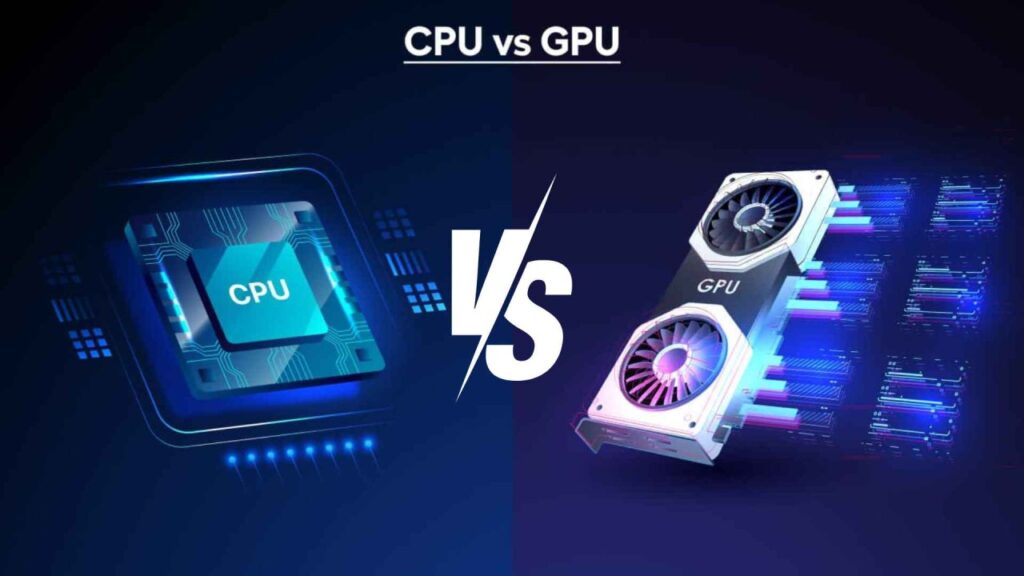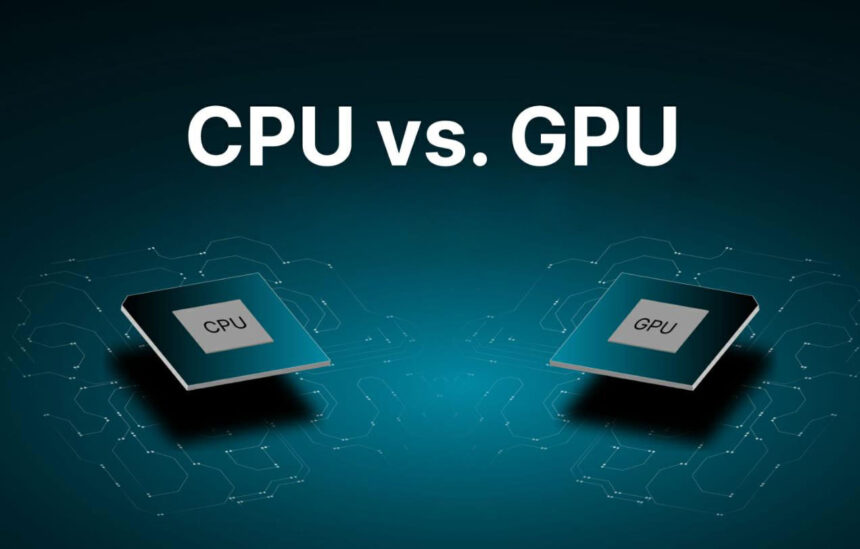In the world of computing, two components stand out as the heart and brain of any machine: the Central Processing Unit (CPU) and the Graphics Processing Unit (GPU). These components work together to ensure that a computer runs efficiently, whether you’re performing basic tasks or engaging in resource-intensive activities like gaming, video editing, or deep learning.
But what exactly do the CPU and GPU do, and why are they so essential? This article will explore the significance of these two crucial components, how they differ, and how they complement each other to create a smooth computing experience.
Understanding the CPU: The Brain of the Computer
The CPU is often referred to as the “brain” of the computer, as it handles the majority of processing tasks. It interprets instructions from programs, performs calculations, and manages data flow between hardware and software.
Key Functions of the CPU
Instruction Processing: The CPU takes instructions from the operating system and applications, processes them, and produces the necessary output. This processing power determines how fast a computer can perform tasks.
- Advertisement -
Arithmetic and Logic Operations: All calculations, logical comparisons, and decision-making processes are executed by the CPU’s Arithmetic Logic Unit (ALU).
Data Control: The CPU manages the flow of data between different parts of the computer, such as the memory, input/output devices, and storage systems.
Multitasking: Modern CPUs are designed with multiple cores, allowing them to handle multiple tasks simultaneously. This feature is essential for multitasking environments, where several applications may run at once.
Importance of CPU in a Computer
The CPU plays a critical role in overall system performance. Here’s why:
System Responsiveness: A fast CPU ensures that the system responds quickly to user commands, making tasks like browsing the web, opening applications, and running scripts smoother.
Performance in Productivity Tasks: For activities like document editing, spreadsheet management, and coding, the CPU is a key determinant of how efficiently these tasks are performed.
Multithreading Capabilities: With CPUs now offering hyper-threading or multithreading technology, they can divide tasks into smaller threads that run concurrently. This increases the speed and efficiency of task processing.
Clock Speed and Core Count: A higher clock speed allows the CPU to execute more cycles per second, increasing the processing speed. Meanwhile, a multi-core processor enables parallel task execution, improving multitasking performance.
Exploring the GPU: The Visual Processing Powerhouse
While the CPU handles most general computing tasks, the GPU is responsible for rendering graphics. This makes it particularly crucial for tasks that involve complex visual processing, such as gaming, video editing, and AI-driven tasks like neural network training.
Key Functions of the GPU
Graphics Rendering: The GPU’s primary function is to render images, videos, and animations. It processes massive amounts of data related to the display, ensuring that graphics appear smooth and visually appealing.
Parallel Processing: Unlike the CPU, which focuses on sequential task processing, the GPU is designed for parallel processing. This means it can handle thousands of simultaneous operations, making it ideal for tasks like rendering 3D graphics and managing complex algorithms in machine learning.
Video Decoding and Encoding: The GPU also assists in the decoding and encoding of videos, ensuring smooth playback and efficient rendering in video editing software.
AI and Machine Learning: With the rise of artificial intelligence, GPUs have become essential in training models due to their ability to process vast amounts of data simultaneously.
Importance of GPU in a Computer
The GPU’s role extends far beyond gaming. Here’s how it impacts various computing activities:
Gaming: For gamers, the GPU is arguably the most important component. Modern video games require a lot of graphical power to render complex scenes, characters, and real-time physics. A powerful GPU ensures smoother frame rates and enhanced visual effects.
Video Editing and Animation: For content creators working with high-resolution videos or 3D animations, the GPU accelerates rendering times and ensures smoother playback of video timelines.
Artificial Intelligence: In AI and machine learning applications, the GPU plays a vital role in accelerating data processing. GPUs are more efficient than CPUs in handling the large datasets required for training neural networks, making them crucial for AI development.
Cryptocurrency Mining: GPUs are highly efficient in solving the complex algorithms used in cryptocurrency mining. This parallel processing power allows them to quickly perform the mathematical calculations required to validate transactions on blockchain networks.
CPU vs. GPU: Key Differences

Understanding the differences between the CPU and GPU can help clarify why both are necessary for various computing tasks.
- Task Specialization:
- The CPU is designed for general-purpose tasks, such as running operating systems and performing calculations.
- The GPU specializes in handling tasks that require simultaneous processing, like rendering graphics or running AI algorithms.
- Architecture:
- CPUs have fewer cores, but each core is highly efficient at executing single tasks in sequence. They are designed to handle complex tasks that require a lot of decision-making.
- GPUs have thousands of smaller cores that can handle multiple operations at once, making them more suited for parallel tasks.
- Performance:
- CPUs excel at tasks that require speed and decision-making, such as running software, managing input/output operations, and executing high-level instructions.
- GPUs outperform CPUs in tasks that require processing large volumes of data, such as rendering high-definition graphics or training AI models.
- Energy Consumption:
- While CPUs are generally more energy-efficient for standard tasks, GPUs consume more power, especially when used for intensive gaming, rendering, or mining tasks.
How CPU and GPU Work Together
Though the CPU and GPU perform different tasks, they often work in tandem to ensure a smooth user experience. For example:
- Gaming: While the GPU handles graphics rendering, the CPU manages the game’s physics, AI, and overall system operations. A well-balanced combination of CPU and GPU ensures optimal gaming performance.
- Content Creation: For video editing or 3D rendering, the CPU handles data management and application processing, while the GPU accelerates rendering times and improves the visual quality of content.
- Machine Learning: The CPU manages the overall orchestration of data pipelines and algorithm selection, while the GPU performs the heavy lifting of model training by processing massive datasets in parallel.
Choosing the Right CPU and GPU for Your Needs
Selecting the right CPU and GPU depends on your intended use case. Here are some considerations:
For General Computing and Productivity:
- CPU: A multi-core processor (like Intel’s Core i5 or AMD’s Ryzen 5) should be sufficient for most everyday tasks such as web browsing, document editing, and running applications.
- GPU: Integrated GPUs (like Intel’s UHD graphics) should suffice for light graphic workloads. Discrete GPUs may not be necessary unless you’re working with more demanding software.
For Gaming:
- CPU: A higher-end multi-core processor (such as Intel’s Core i7 or AMD’s Ryzen 7) is ideal for managing in-game AI and physics calculations.
- GPU: A powerful dedicated GPU (like NVIDIA’s RTX series or AMD’s Radeon series) is essential for high-definition graphics and maintaining smooth frame rates.
For Content Creation and AI Development:
- CPU: A high-performance CPU (like Intel’s Core i9 or AMD’s Ryzen 9) will handle large workloads efficiently.
- GPU: For video editing, 3D rendering, and machine learning, a high-end GPU with parallel processing capabilities (such as NVIDIA’s RTX 3090 or AMD’s RX 6900 XT) is crucial for optimal performance.
Future Trends: The Evolving Role of CPU and GPU
As technology advances, both CPUs and GPUs are becoming more powerful, with innovations like Ray Tracing and AI-enhanced computing blurring the lines between their roles. Additionally, the rise of heterogeneous computing—where CPUs and GPUs work even more closely together—may further enhance overall system performance in the future.
The importance of the CPU and GPU in a computer cannot be overstated. While the CPU handles most of the system’s day-to-day operations, the GPU is essential for tasks requiring high levels of visual processing.
Together, they ensure that your computer can handle a variety of tasks efficiently, from running simple programs to rendering complex graphics or training AI models. As technology continues to evolve, the synergy between these two components will become even more critical in shaping the future of computing.

